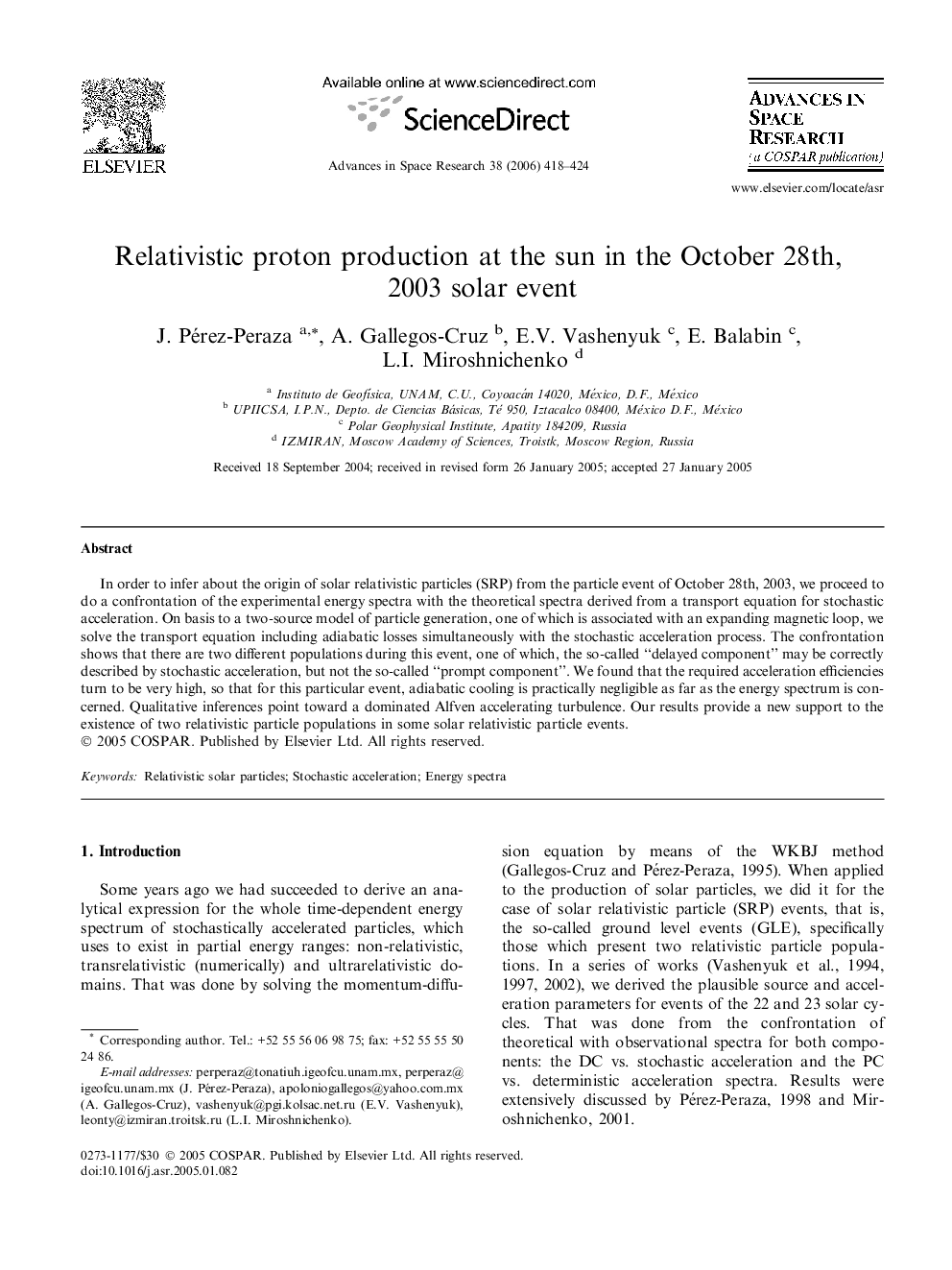| Article ID | Journal | Published Year | Pages | File Type |
|---|---|---|---|---|
| 1768541 | Advances in Space Research | 2006 | 7 Pages |
Abstract
In order to infer about the origin of solar relativistic particles (SRP) from the particle event of October 28th, 2003, we proceed to do a confrontation of the experimental energy spectra with the theoretical spectra derived from a transport equation for stochastic acceleration. On basis to a two-source model of particle generation, one of which is associated with an expanding magnetic loop, we solve the transport equation including adiabatic losses simultaneously with the stochastic acceleration process. The confrontation shows that there are two different populations during this event, one of which, the so-called “delayed component” may be correctly described by stochastic acceleration, but not the so-called “prompt component”. We found that the required acceleration efficiencies turn to be very high, so that for this particular event, adiabatic cooling is practically negligible as far as the energy spectrum is concerned. Qualitative inferences point toward a dominated Alfven accelerating turbulence. Our results provide a new support to the existence of two relativistic particle populations in some solar relativistic particle events.
Related Topics
Physical Sciences and Engineering
Earth and Planetary Sciences
Space and Planetary Science
Authors
J. Pérez-Peraza, A. Gallegos-Cruz, E.V. Vashenyuk, E. Balabin, L.I. Miroshnichenko,
